Your cart is currently empty!
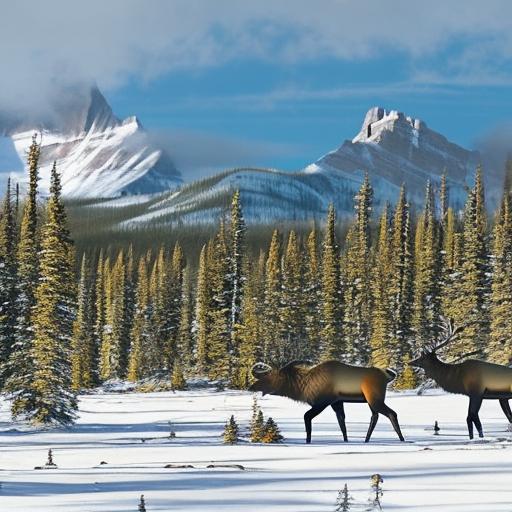
Unleashing the Thrill of Elk Hunting in Alberta: A Guide to a Memorable Experience

Elk hunting in Alberta is an exhilarating and thrilling experience that attracts hunters from all over the world. With its vast wilderness and abundant elk population, Alberta offers some of the best hunting opportunities in North America. The province is known for its rugged terrain, challenging weather conditions, and the chance to bag a trophy-sized elk. Whether you are a seasoned hunter or a beginner, elk hunting in Alberta promises excitement, adventure, and the opportunity to test your skills in the great outdoors.
Key Takeaways
- Elk hunting in Alberta is a thrilling adventure that awaits those who are up for the challenge.
- The best time to hunt elk in Alberta is during the fall season, specifically in September and October.
- Essential gear and equipment for elk hunting include a rifle or bow, appropriate clothing, and a hunting license.
- Understanding elk behavior and habitat is crucial for a successful hunt, including knowing where to find them and how to approach them.
- Elk hunting techniques vary between bow hunting and rifle hunting, with each requiring different skills and strategies.
The Best Time to Hunt Elk in Alberta
Elk hunting in Alberta is regulated by seasons and dates set by the government. The general season for elk hunting typically runs from September to November, with specific dates varying each year. It is important to check the current regulations and dates before planning your trip. Weather considerations also play a crucial role in determining the best time to hunt elk in Alberta. Early season hunts in September offer cooler temperatures and less snow, but the elk may still be in higher elevations. Late season hunts in November can be colder and snowier, but the elk may have migrated to lower elevations, making them easier to locate.
Planning your trip accordingly is essential for a successful elk hunt. Consider factors such as your physical fitness level, preferred hunting method, and personal preferences for weather conditions. It is also important to research the specific area you plan to hunt in, as elk behavior and migration patterns can vary across different regions of Alberta.
Preparing for Your Elk Hunting Trip
Preparing for an elk hunting trip requires careful consideration of essential gear and equipment. A reliable rifle or bow is a must-have for any elk hunter. It is important to choose a weapon that you are comfortable with and proficient in using. Additionally, make sure to bring plenty of ammunition or arrows, as well as a quality scope or sight for your rifle or bow.
Clothing and footwear recommendations for elk hunting include layering your clothing to adapt to changing weather conditions, wearing camouflage to blend in with your surroundings, and investing in quality waterproof and insulated boots. It is also important to pack essential items such as a backpack, binoculars, a knife, a headlamp, and a first aid kit.
When packing for your elk hunting trip, consider the length of your stay and the amenities available at your accommodations. Pack enough food and water to sustain you during your hunting days, as well as any necessary cooking equipment. It is also important to bring appropriate camping gear if you plan on staying in the wilderness.
Understanding Elk Behavior and Habitat
| Metrics | Description |
|---|---|
| Elk Population | The total number of elk in a given area or region. |
| Elk Habitat | The type of environment or ecosystem where elk live and thrive. |
| Elk Diet | The types of food that elk consume, including grasses, shrubs, and trees. |
| Elk Behavior | The patterns of movement, communication, and social interaction among elk. |
| Elk Migration | The seasonal movement of elk from one area to another in search of food, water, and shelter. |
| Elk Predators | The animals that hunt and prey on elk, including wolves, bears, and mountain lions. |
| Elk Conservation | The efforts to protect and preserve elk populations and their habitats through hunting regulations, habitat restoration, and other measures. |
To increase your chances of a successful elk hunt, it is important to understand elk behavior and habitat preferences. Scouting for elk before your hunt can greatly improve your chances of locating them during the season. Look for areas with fresh tracks, droppings, and rubs, as these are signs that elk have recently been in the area. Pay attention to their preferred food sources, such as grasses, shrubs, and tree bark.
Elk tracks can be identified by their size and shape. They are larger than deer tracks and have a distinct heart-shaped outline. Look for tracks in areas with soft soil or mud, as they will be easier to spot. Additionally, elk often leave behind signs such as broken branches or trees where they have rubbed their antlers.
Elk prefer habitats with a mix of open meadows and dense forests. They are often found near water sources such as rivers, lakes, or ponds. Look for areas with good visibility and cover for stalking or setting up a blind.
Elk Hunting Techniques
Elk hunting in Alberta can be done with either a bow or a rifle. Each method has its pros and cons, and the choice ultimately depends on personal preference and skill level. Bow hunting requires more skill and patience, as it requires getting closer to the elk and making a precise shot. Rifle hunting offers greater range and accuracy, but it may require longer shots and less stealth.
To increase your chances of a successful elk hunt, it is important to practice shooting regularly and become proficient with your chosen weapon. Additionally, learning to call elk can be an effective technique for attracting them closer. There are various elk calls available on the market, including bugles and cow calls, which can mimic the sounds of elk in order to lure them in.
Choosing the right weapon for your skill level is crucial. If you are a beginner or less experienced hunter, it may be wise to start with a rifle before transitioning to bow hunting. It is also important to consider the regulations and restrictions for each hunting method, as they may vary depending on the area you plan to hunt in.
Safety Precautions for Elk Hunting in Alberta

Elk hunting in Alberta takes place in remote and rugged wilderness areas, which can present certain safety risks. It is important to take precautions to ensure your safety during your hunting trip. Wilderness safety tips include informing someone of your hunting plans and expected return time, carrying a map and compass or GPS device for navigation, and being prepared for changing weather conditions.
Bear encounters are also a concern when hunting in Alberta. It is important to be bear aware and take necessary precautions to avoid encounters. This includes carrying bear spray, making noise while hiking or stalking, and properly storing food and garbage to avoid attracting bears.
Navigation and communication tools are essential for ensuring your safety during an elk hunting trip. A GPS device or map and compass can help you navigate through unfamiliar terrain, while a satellite phone or two-way radio can provide a means of communication in case of emergencies.
Hunting Regulations and Licensing in Alberta
Hunting regulations in Alberta are set by the government to ensure sustainable wildlife populations and responsible hunting practices. It is important to familiarize yourself with the current regulations before planning your elk hunting trip. These regulations include bag limits, hunting seasons and dates, and specific restrictions for certain areas or methods of hunting.
Licensing requirements for non-residents of Alberta may differ from those for residents. Non-residents typically require a hunting license and a wildlife certificate, which can be obtained through the Alberta government’s licensing system. It is important to apply for these licenses well in advance of your planned hunting trip, as they may have limited availability.
Tag and bag limits are in place to manage elk populations and ensure sustainable hunting practices. These limits specify the number of elk that can be harvested per hunter, as well as any restrictions on antler size or gender. It is important to adhere to these limits and report your harvest to the appropriate authorities.
Choosing a Hunting Guide
Hiring a hunting guide can greatly enhance your elk hunting experience in Alberta. A hunting guide can provide valuable knowledge and expertise about the area, increase your chances of success, and ensure your safety during the hunt. They are familiar with the local terrain, elk behavior, and hunting techniques, which can give you a significant advantage.
When choosing a hunting guide, it is important to consider their experience, reputation, and qualifications. Look for guides who have a proven track record of successful hunts and positive reviews from previous clients. It is also important to communicate your expectations and preferences with the guide to ensure they can meet your needs.
Researching and selecting a hunting guide should be done well in advance of your planned hunting trip. Start by asking for recommendations from fellow hunters or researching online for reputable guides in the area you plan to hunt in. Contact potential guides to discuss your needs and ask any questions you may have before making a final decision.
Accommodations and Dining Options for Elk Hunting in Alberta
There are various types of accommodations available for elk hunters in Alberta, ranging from rustic cabins or lodges to camping in the wilderness. The type of accommodation you choose depends on your personal preferences and the amenities you require. Cabins or lodges offer more comfort and convenience, with amenities such as heating, electricity, and running water. Camping in the wilderness provides a more immersive experience but requires more preparation and self-sufficiency.
Dining options in the area will depend on the location of your accommodations. If you are staying in a cabin or lodge, there may be dining options available on-site or nearby. If you are camping in the wilderness, you will need to bring your own food and cooking equipment. It is important to plan and pack enough food to sustain you during your hunting days, as well as any necessary cooking equipment.
To ensure a comfortable and enjoyable trip, it is recommended to research and book accommodations well in advance of your planned hunting trip. Consider factors such as proximity to hunting areas, amenities available, and any additional services or activities offered.
Capturing the Moment
Elk hunting in Alberta is not only about the thrill of the hunt but also about creating lasting memories. Photographing your elk hunting adventure allows you to preserve those memories and share them with others. It is important to bring appropriate camera equipment, such as a DSLR camera with a telephoto lens, to capture high-quality images of your hunt.
When photographing elk hunting, it is important to prioritize safety and respect for the animal. Avoid disturbing or stressing the elk for the sake of a photograph. Instead, focus on capturing their natural behavior and habitat from a safe distance.
Preserving memories of your trip can be done through various means, such as creating a photo album or scrapbook, printing and framing your favorite images, or sharing them on social media. It is important to take the time to reflect on your hunting experience and appreciate the beauty of nature that you were able to witness.
Elk hunting in Alberta offers excitement, adventure, and the opportunity to test your skills in the great outdoors. By understanding the best time to hunt, preparing for your trip, and familiarizing yourself with elk behavior and habitat, you can increase your chances of a successful hunt. Taking safety precautions, adhering to hunting regulations, and considering the benefits of hiring a hunting guide can further enhance your elk hunting experience. With proper planning and preparation, an elk hunting trip in Alberta can be a memorable and rewarding adventure.
If you’re an avid hunter planning an elk hunting trip in Alberta, you may also be interested in learning about the best time of day to hunt quail. Quail hunting can be a thrilling and rewarding experience, and knowing the optimal time to pursue these elusive birds can greatly increase your chances of success. Check out this informative article on the Old Oak Syndicate website that provides valuable insights into the best time of day to hunt quail: https://oldoaksyndicate.com/best-time-of-day-to-hunt-quail/. Happy hunting!
FAQs
What is elk hunting?
Elk hunting is the practice of pursuing and killing elk for sport or food.
Is elk hunting legal in Alberta?
Yes, elk hunting is legal in Alberta, but it requires a license and adherence to specific regulations.
What is the hunting season for elk in Alberta?
The hunting season for elk in Alberta varies depending on the type of elk and the hunting zone. Generally, the season runs from September to November.
What are the regulations for elk hunting in Alberta?
The regulations for elk hunting in Alberta include obtaining a license, following specific hunting zones and seasons, using appropriate hunting equipment, and reporting any kills to the government.
What is the cost of an elk hunting license in Alberta?
The cost of an elk hunting license in Alberta varies depending on the type of license and residency status. Non-residents can expect to pay more than residents.
What is the success rate for elk hunting in Alberta?
The success rate for elk hunting in Alberta varies depending on the hunting zone and the skill of the hunter. Generally, the success rate is around 20-30%.
What equipment is needed for elk hunting in Alberta?
Equipment needed for elk hunting in Alberta includes a hunting rifle, appropriate ammunition, hunting clothing, binoculars, and a hunting knife.
What is the best time of day to hunt elk in Alberta?
The best time of day to hunt elk in Alberta is during the early morning or late evening when elk are most active.

Herb has been a longtime lover of the outdoors. Whether it be hunting, camping, fishing or just getting outside to reset. Proud father and animal lover. Bourbon anyone?

by
Tags:
Comments

Categories
- Big Game Hunting (301)
- Deer (202)
- Reviews (3)
- Shooting (16)
- Slingshot (1)
- Small Game Hunting (42)
- Upland Hunting (126)
- Waterfowl Hunting (3)

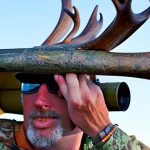
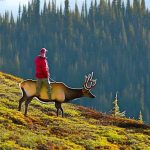
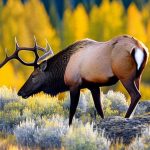
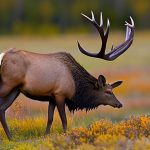
Leave a Reply